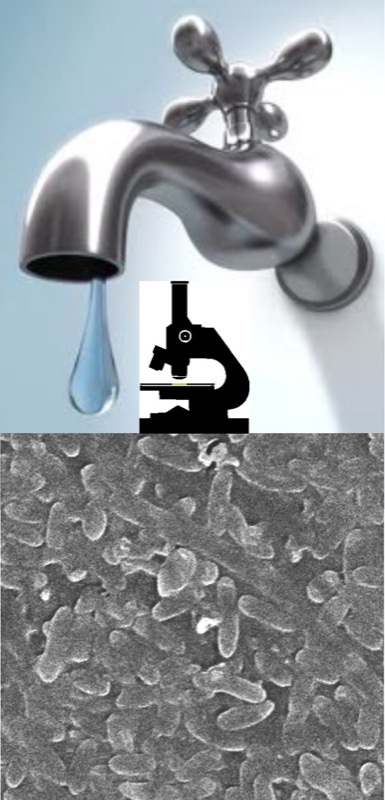New automated system to kill bacteria in hospital water systems and taps
Posted on: 02 March 2012
A team of Trinity College Dublin researchers has developed a fully automated system that eradicates bacterial contamination in hospital water tanks, distribution systems and taps. This type of contamination was linked to the recent tragic deaths of three babies in a Belfast Maternity Hospital. The findings will be published in the April edition of the Journal of Hospital Infection and have just been published online.
The Health Research Board (HRB) and Microbiology Unit at Dublin Dental University Hospital funded this research which has proved to be a revolutionary approach to eradicating bacterial contamination. The system is also more cost effective than current practice and reduces maintenance requirements.
Hospital washbasin taps and output water are reservoirs of bacteria in a hospital environment which can lead to grave outcomes. It has been estimated that hospital-acquired Pseudomonas aeruginosa pneumonia originating from hospital water systems kills over 1400 patients annually in the USA. Severely ill patients and patients in high dependency units are particularly vulnerable to this type of infection.
“Hospital water systems and washbasin taps are frequently contaminated with biofilm-containing ‘opportunistic bacteria’, especially P. aeruginosa. We developed the new water treatment system and field-tested the technology for over a year in the Dublin Dental University Hospital’s clinics,” explains Professor David Coleman, Principal Investigator at Trinity College Dublin.
“At the start of the study, the team measured the number of bacteria in hot and cold water from the hospital clinics’ washbasin taps. The hot taps regularly yielded an average bacterial density of 482 colony forming units (CFU) for every millilitre (ml) of water, while cold water taps had 5022 CFU per ml. The predominant bacterial species identified were Pseudomonas and related species, including P. aeruginosa.”
“We cleaned and disinfected the water distribution network at the Dental Hospital, then developed and installed a novel automated water disinfection system to eradicate microbial contamination on a continuous basis. The system involved automatically treating supply water with Ecasol*, a powerful environmentally-friendly disinfectant generated by electrochemical activation (ECA) of a dilute salt solution using an ECA generator manufactured by Trustwater, Clonmel. Electronic probes constantly monitor the levels of Ecasol in the water network and adjust the levels via automated pumps when contamination is encountered.”
“For 54 weeks we measured the microbiological quality of water from five sentinel washbasin taps in one of the hospital’s clinics by laboratory culture. The bacterial counts for hot, cold, and tank water during the study period were 1 cfu/ml, 2 cfu/ml, and 0 cfu/ml, respectively. Bacterial contamination of taps was virtually eliminated.”
“Our results demonstrate that by systematically destroying bacteria throughout a hospital’s water distribution network, and in the supply water, we have a consistently effective and safe means of ensuring that hospital water and washbasin taps are no longer reservoirs of contamination that can lead to patients becoming infected in hospitals. It builds upon previous work** we did to solve the longstanding problem of biofilm contamination of dental chair unit water lines and output water,” concludes Professor Coleman.
The research also points to significant cost efficiencies while maintaining excellent microbiological control of water quality.
Installation costs for Ecasol-generating equipment, pumps and probes were approximately €35,000, annual running costs are less than €1000 and annual maintenance costs are approximately €3000. These running costs are significantly lower than current water treatment systems which are less efficient. The research team plan to assess the efficacy of the system in a larger hospital in the course of the research project.”The Health Research Board invested in this project because it was clear that it would deliver practical and cost-effective benefits, both for patients and the health system. We look forward to seeing the technology being adopted in order to improve patient safety and reduce running costs,” says Enda Connolly, Chief Executive, HRB.
The manuscript for the study is being published ahead of print. The final, edited article is scheduled to be published in the Journal of Hospital Infection later in 2012.
M.A. Boyle, M.J. O’Donnell, A. Miller, R.J. Russell and D.C. Coleman. 2012. Control of bacterial contamination of washbasin taps and output water using Ecasol: a one year study. J. Hosp. Infect. 88:
*Ecasol has been tested and shown not to be harmful to human contact.
** M.J. O’Donnell et al. 2009. J. Dent. 37:748-762.
The research team included Professor David Coleman, Dr. Maria Boyle, Dr. Mary O’Donnell and Ms. Aisling Milller at TCD’s School of Dental Science, Division of Oral Biosciences, together with Dr Ronnie Russell at TCD’s Department of Microbiology.

